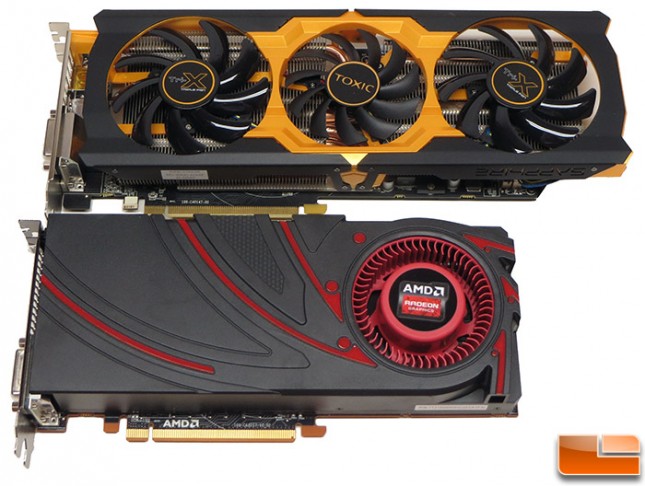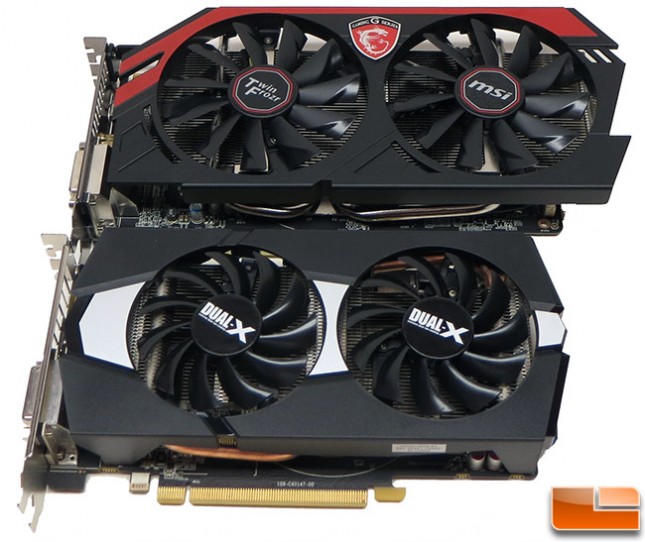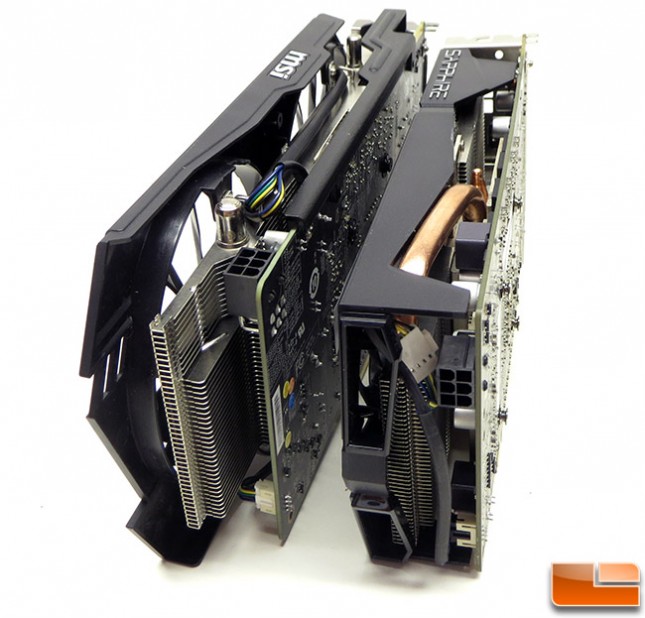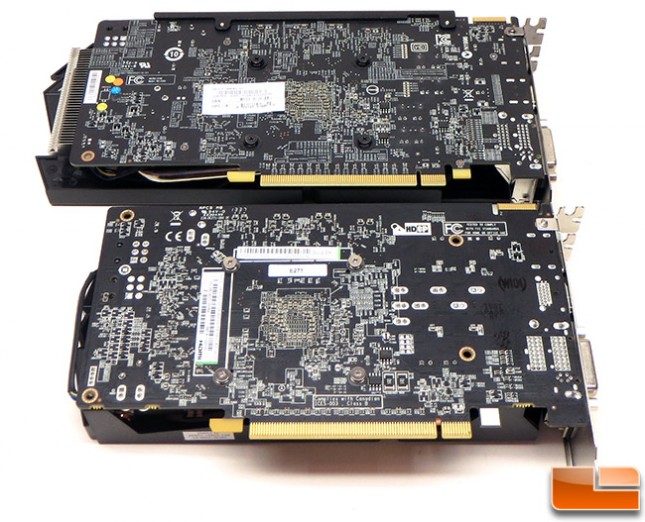AMD Targets Video Cards At The $179 Price Point
Advanced Micro Devices (AMD) has been keeping us extremely busy launching new graphics cards and this week is no different. AMD announced the Radeon R9 270 graphics card this morning at the $179.99 price point. This is the sixth video card that AMD has added to the Radeon R7 and R9 series of video cards since October! This ‘new’ card is interesting as it reduces the entry price into the high-end R9 series down to the $179 price point and uses the same exact Pitcarin GPU found on the AMD Radeon R9 270X!
The AMD Radeon R9 270 is pretty much the same thing as the Radeon R9 270X, but it features a lower GPU clock speed and power envelope. The AMD Radeon R9 270X had a typical board power of 180 Watts and required two 6-pin PCIe power connectors. The new AMD Radeon R9 270 has a typical board power of just 150 Watts, which means it can get away with a single 6-pin PCIe power connector. This is significant as many older systems and the vast majority of store bought systems can only handle a modest discrete graphics card.
The AMD Radeon R9 270X was clocked at 1050 MHz on the core and 1400 MHz on the GDDR5 memory. The new AMD Radeon R9 270 runs at 925 MHz on the core and 1400 MHz on the GDDR5 memory. This means the core clock speed has been lowered 75MHz, which is right around a 7% clock speed reduction from the R9 270X. The lowered clock speed means that the card has just 2.37 TFLOPS of compute performance versus 2.69TFLOPS before. This is a decrease of 11.9-percent, so it looks like lowering the clock speeds and board power will certainly have an impact on gaming performance and thus the $20 price cut.
Radeon R9 270 Radeon R9 270X Radeon HD 7870 GHz Release Date November 2013 October 2013 March 2012 Original SRP $179 $199 $349 GPU Pitcarin Pitcarin Pitcarin Process 28nm 28nm 28nm Transistors 2.8 billion 2.8 billion 2.8 billion Stream Processors 1280 1280 1280 Clock Speed 925 MHz 1050 MHz 1000 MHz Frame Buffer 2GB 2GB 2GB Memory Width 256-bit 256-bit 256-bit Memory Clock 1400 MHz 1400 MHz 1200 MHz Compute Perf 2.37 TFLOPS 2.69 TFLOPS 2.56 TFLOPS Texture Units 80 80 80 ROPs 32 32 32 Typical Board Power 150W 180W 175W
Here is a quick table that compared the key specifications for some of the Pitcarin based graphics cards. Now that you know what the key changes are between the ‘old’ AMD Radeon R9 270X and the ‘new’ AMD Radeon R9 270, we can dive into the review!
AMD did not send us their Radeon R9 270 reference card, but we were able to get our hands on a pair of retail cards from our friends at MSI and Sapphire! MSI sent over the Radeon R9 270 Gaming OC 2GB video card (part number R9 270 GAMING 2G) and Sapphire sent the Dual-X R9 270 2G GDDR5 with Boost (Part number 11220-00-40G).
As you can see from the table above both the MSI and Sapphire Radeon R9 270 cards that we were sent are factory overclocked cards. The MSI R9 270 Gaming is 50MHz over stock and the Sapphire Dual-X OC is 20MHz over the reference cards speeds set by AMD. This is a modest overclock by all means, but remember we are likely going to be overclocking limited by the power envelope on this card and the single 6-pin PCie power connector.
MSI R9 270 Gaming OC Sapphire Dual-X R9 270 OC SRP $179 $179 Clock Speed 975 MHz 945 MHz Memory Clock 1400 MHz 1400 MHz
Both AMD Raedeon R9 270 video cards feature dual-slot GPU coolers with twin cooling fans and share the same GPU and amount of memory and that is where the similarities end. Both companies made custom PCBs for their Radeon R9 270 cards, The Sapphire Dual-X R9 270 OC video card measures 7.8-inches in length, but the fan shrouds brings the total length of the card to just uner 8.25-inches. The MSI R9 270 Gaming is 10-inches long (PCB Measures 8.75-inches, but the fan aluminum cooling fins and fan shroud both extend past the PCB).
When it comes to video outputs you have a pair of DVI connectors (DVI-I and DVI-D), Display Port and HDMI. Both cards have slots for hot air to exhaust, but it appears that Sapphire has enlarged theirs to reduce noise and improve airflow for better cooling.
Both cards feature a GPU cooler that has two two copper heatpipes, but the differ in size. The MSI card uses one 6mm and one 8mm, whereas the Sapphire card uses two 8mm heatpipes. The actual fan blade diameter on the MSI card is 95mm and just 74mm on the Sapphire Dual-X card. It will be interesting to see how these cards keep cool with the different cooler designs as MSI is using larger fans with smaller heatpipes and Sapphire is using larger heatpipes with smaller fans. Both cards also have one AMD CrossFire interconnect located along the top edge of the card for multi-GPU setups.
Both cards have a single of 6-pin PCI Express power connector located near the end of the card. The MSI R9 270 Gaming OC has it located on the top and the Sapphire Dual-X R9 270 has it located at the end of the video card. Both MSI and Sapphire recommend a 500W or greater power supply with one 75W 6-pin power connector for this video card to operate properly. If you wanted to run AMD CrossFire at some point in time, the recommended PSU is a 600W or greater model with two 75 Watt PCIe power connectors.
Both MSI and Sapphire didn’t use a backplate on their Radeon R9 270 video cards! The MSI Radeon R9 270 Gaming OC and Sapphire Dual-X R9 270 are two good looking cards, but how do they perform? Let’s put them both to the test and see how they do!
Source:
Read more at MSI Radeon R9 270 Gaming OC and Sapphire Dual-X R9 270 OC Video Card Review - Legit ReviewsAMD Targets Video Cards At The $179 Price Point
Results 1 to 10 of 21
-
12-01-2013, 11:43 PM #1
 Radeon R9-270 fastest GPU that only needs 1 6pin power connector
Radeon R9-270 fastest GPU that only needs 1 6pin power connector
-
12-01-2013, 11:52 PM #2
-
12-02-2013, 08:13 AM #3C.I.A.

- Join Date
- Jul 2010
- Gender

- Posts
- 2,847
Nice info bro...
-
12-02-2013, 05:02 PM #4
Correct me if i'm wrong pero ka level performance ra ba ni xa or higher sa gtx 660 or 660ti. Just curious.
-
12-02-2013, 07:22 PM #5
-
12-02-2013, 11:06 PM #6
mas kusog pa ni cxa sa 660 boss, pero mas kusog ang 660ti gamai ra.. pero if e OC ni cxa nmo mas pabor... mas hinay sad kaon kuryente..
- - - Updated - - -
pareha jud ta boss, sapphire hd 7790 dualx OC akoa krn.. pang ilis jud ni.. hahahha hinay raman gud ang r7 260x..
-
12-02-2013, 11:17 PM #7
-
12-02-2013, 11:46 PM #8
mao mao ra jud sa 7790 ang 260..haha..sayang lang kay walay true audio ang r9 270..wala pa ni sa enigma sah? way au design sa sapphire karun..plain ra kaayu.. haha..
-
12-03-2013, 12:03 AM #9
-
12-03-2013, 02:36 AM #10
same raman itsura ang MSI walai nausab,,,, ang sapphire mao naa bag.o looks.. ang Vapor-x ug toxic edition nila haskang nindota...
mao ni pix sa r9-270x toxic compared sa reference design
siga2 ang logo nya naa pajud backplate..wew





Advertisement
Similar Threads |
|












 Reply With Quote
Reply With Quote


